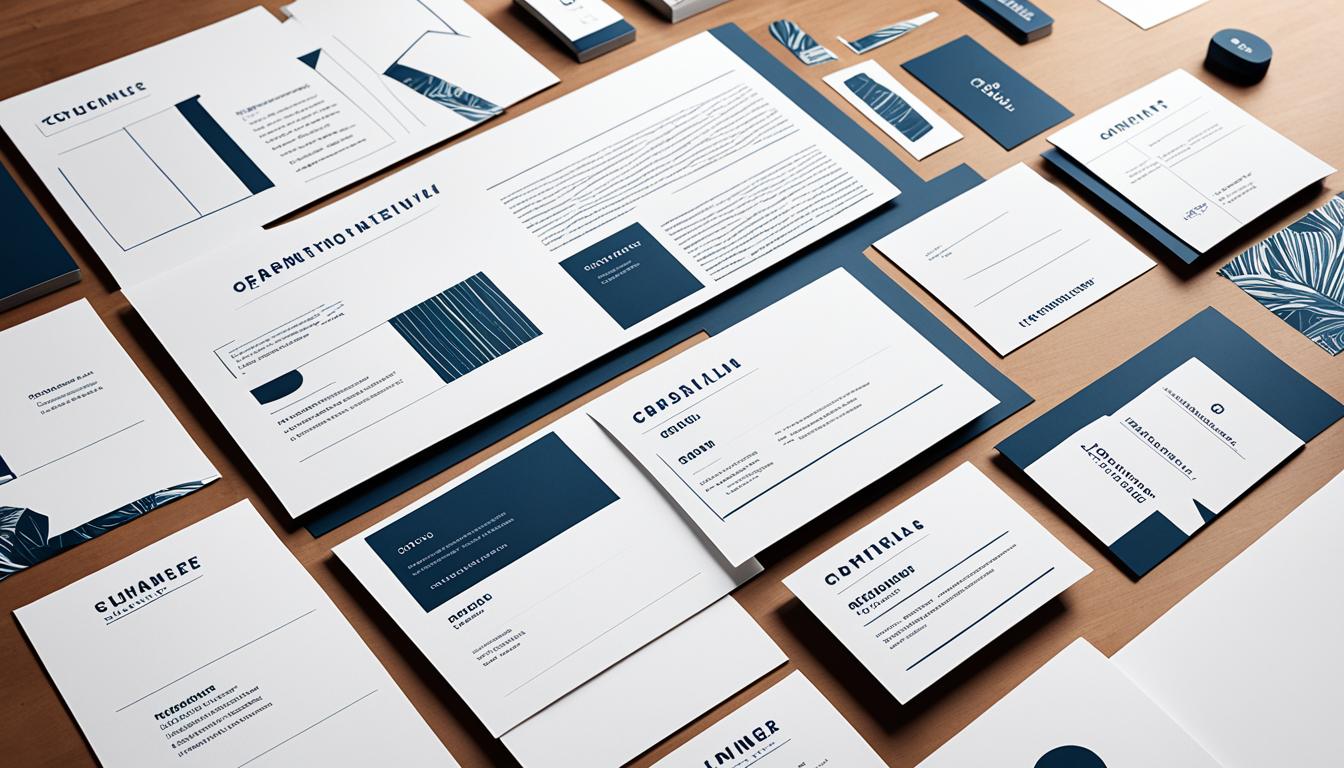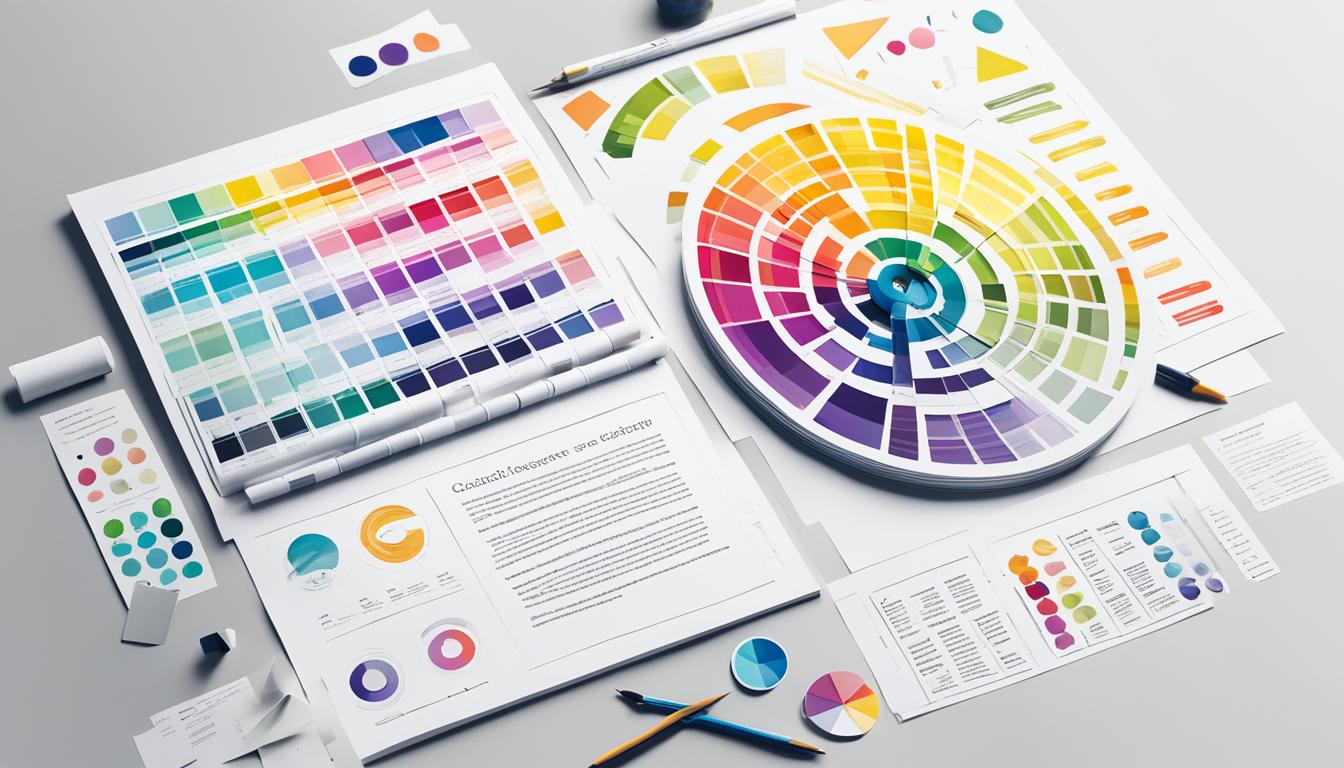Build Your Graphic Design Portfolio – Essential Tips
Having a strong graphic design portfolio is crucial for showcasing your skills and securing clients in the competitive design industry. A well-curated portfolio not only demonstrates your expertise but also serves as a testament to your creative abilities. Whether you’re a seasoned designer looking to elevate your career or a newbie seeking to make a mark, building an impressive portfolio is a vital step towards career advancement.
A compelling graphic design portfolio allows you to effectively highlight your capabilities, attract potential clients, and differentiate yourself from other designers in the field. It serves as a visual representation of your skills, aesthetics, and problem-solving abilities. In this article, you’ll discover essential tips to help you build a standout portfolio that will captivate and impress:
1. Showcase Your Skills: Your portfolio should include a diverse range of projects that highlight your technical expertise, creativity, and problem-solving capabilities. Include a variety of design pieces, such as logos, branding materials, illustrations, web designs, and print collateral. This will demonstrate your versatility and proficiency in different areas of graphic design.
2. Tailor Your Portfolio: Customize your portfolio to align with the specific needs and interests of your target clients or potential employers. Research the industry or companies you’re interested in working with and select projects that showcase relevant skills or industries. This tailored approach enhances your chances of securing clients or landing your dream job.
3. Craft a Compelling Story: Your portfolio should tell a cohesive and compelling story about your design journey and professional growth. Use captions, descriptions, and case studies to provide context for each project, explaining your design process, challenges faced, and solutions implemented. This narrative approach allows potential clients and employers to understand your design thinking and problem-solving abilities.
4. Highlight Results: Whenever possible, include measurable results or client testimonials to demonstrate the impact of your work. If a design project resulted in increased sales, improved brand visibility, or positive feedback from clients, showcase these achievements in your portfolio. Quantifiable results provide concrete evidence of your abilities and the value you can bring to clients or companies.
5. Stay Up to Date: Keep your portfolio relevant and up to date by regularly adding new projects and removing outdated or weaker pieces. As you gain experience and skills, replace older work with fresh and more impressive designs. This ongoing curation will showcase your growth and commitment to continually honing your craft.
Building an exceptional graphic design portfolio is an ongoing process that requires time, effort, and careful consideration. By following these essential tips, you can create a portfolio that not only showcases your skills but also resonates with potential clients and employers. Start building your portfolio today and take your graphic design career to new heights.
Specialize in a Graphic Design Discipline
Specializing in a specific graphic design discipline can make you stand out from the competition and increase your chances of landing an interview or securing a job. Instead of trying to do everything, focus on a particular area of design that you excel at and have a passion for. Whether it’s logo design, illustration, branding, web design, or any other niche within the field, honing your skills in one area allows you to showcase your expertise and demonstrate your unique value to potential employers.
When building your portfolio, be clear about your specialization and emphasize the relevant projects and experience in that specific discipline. This way, you can effectively market yourself as an expert in your chosen field. Employers are often looking for specialists who can bring depth and specialized knowledge to their teams.
The Benefits of Specializing
By specializing in a particular graphic design discipline, you can enjoy several advantages:
- 1. Stand out from the competition: Having a specialization sets you apart from generalist designers and makes you a sought-after candidate for specific projects or roles.
- 2. Increase interview opportunities: Employers are more likely to invite you for an interview if your portfolio showcases expertise in their desired design discipline.
- 3. Showcase your unique skills: Specializing allows you to develop a deep understanding of your chosen field and deliver exceptional results.
- 4. Build a focused portfolio: By concentrating on a specific discipline, you can curate a portfolio that highlights your best work and projects relevant to your specialization.
Remember, as a specialized graphic designer, it’s essential to stay up to date with industry trends, techniques, and best practices in your chosen discipline. This ongoing learning ensures that you continue to provide valuable and relevant design solutions to clients or employers.
Examples of Graphic Design Disciplines
| Discipline | Description |
|---|---|
| Logo Design | Focusing on creating unique and memorable logos that represent brands and resonate with target audiences. |
| Illustration | Developing hand-drawn or digitally created illustrations for various applications such as books, magazines, websites, or advertisements. |
| Branding | Designing visual identities, including logos, typography, colors, and brand guidelines, to establish a consistent and recognizable brand image. |
| Web Design | Creating visually appealing and user-friendly website interfaces that effectively communicate a brand’s message and drive user engagement. |
Remember, while specialization is important, it’s also essential to have a broad understanding of graphic design principles and techniques. This versatility allows you to adapt to different design projects and collaborate effectively with professionals from various disciplines.
Show Off Your Personality in Your Portfolio
Your portfolio is not just a collection of your work; it is also an opportunity to express your unique personality and personal brand as a designer. When potential clients and employers view your portfolio, they want to see more than just your technical skills – they want to get a glimpse of who you are as an individual.
One effective way to showcase your personality is by including a short bio on your website or portfolio landing page. This bio can highlight your unique qualities, design ethos, and the values that drive your creative process. By sharing a bit about yourself, you allow potential clients and employers to connect with you on a deeper level and understand what sets you apart from other designers.
In addition to your bio, your portfolio’s design choices can also reflect your personal style and individuality. Consider using typography, color schemes, and overall aesthetics that align with your creative identity. Use these elements to create a cohesive and visually striking portfolio that captures your unique flair.
Remember, authenticity is key. Allow your personality to shine through in your work, whether it’s through your design choices, project descriptions, or the overall tone of your portfolio. Clients and employers are not only interested in your technical skills – they want to work with someone who fits their company culture. By showcasing your personality, you not only demonstrate your skills but also increase your chances of finding the right opportunities that align with your values and interests.
FAQ
Why is having a strong graphic design portfolio important?
Having a strong graphic design portfolio is crucial for showcasing your skills and securing clients in the competitive design industry. It serves as a visual representation of your abilities and allows potential clients or employers to assess the quality and scope of your work.
How can specializing in a specific graphic design discipline help me?
Specializing in a specific graphic design discipline can help you stand out from the competition and increase your chances of landing an interview or securing a job. By focusing on a particular area of design that you excel at and have a passion for, you can demonstrate your unique value and skills to potential employers.
How can I show off my personality in my portfolio?
Your portfolio is an opportunity to not only showcase your work but also express your personality and personal brand. You can do this by including a short bio on your website or portfolio landing page that highlights your unique qualities and design ethos. Additionally, use typography, color schemes, and overall design choices that reflect your personal style and creative identity.
What should I emphasize in my portfolio to showcase my specialization?
To showcase your specialization, be clear about your area of expertise in your portfolio and emphasize the relevant projects and experience in that specific area. This will help potential clients or employers understand your unique skills and value in your chosen graphic design discipline.










